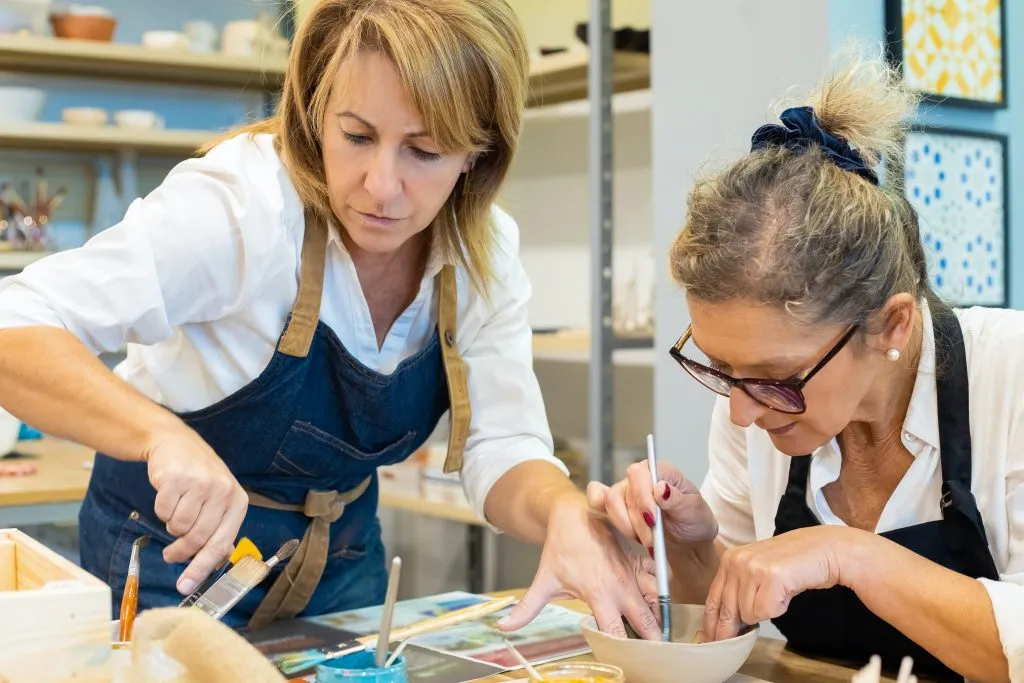ART Book Club – Book 8 – A journey through Time, history and memories – 1000 years of Joy and Sorrow a Memoir by Ai Wei Wei
For the latest edition of the book club, we are presenting the book of an artist that many know – Ai Weiwei – an artist who refuses to color in the lines.


It seems timely to look at how government decisions can impact the arts of a country, how art can tell stories and furthermore how art engages with life. This book is a journey, through joy and sorrow, through events and recollection, to assess the present with the past in mind and give clues to understand the future. It recounts personal and countrywide emotions, (his)stories and realities of a time that has left traces behind, crumbles to pick up one by one till the picture is complete and makes sense.
No matter if you have read the book or not, we invite you to reflect on these questions:
- Is there an Ai Weiwei art installation or an artwork that triggers your memory and brings you to personal or collective recollection?
- What is the importance of memory in our lives, both personally and collectively? How can a governing body impact the arts?
- How art and life are intrinsically related and how do they influence each other? What is the power of art in life and the power of life in art?
As usual, it is our pleasure to give away 5 copies of 1000 years of Joy and Sorrow – a Memoir will be a giveaway! Please comment on our giveaway post on Instagram to enter it! You will get additional chances to win your copy by leaving comments, discussing the subject of this book, the power of art and tagging other people.
And if you have a suggestion for us regarding the book club or even a book to suggest – email el@nic.art.
Review of the book by evlyne Laurin
I don’t remember what the first piece that I saw from Ai was, I remember quite easily when his disappearance made the news. Furthermore, I remember being very very privileged (and yes, the TWO very are needed here) when I had the opportunity to visit his exhibition at the Royal Academy, alone, strolling the deserted galleries one after the other, not even encountering security guards. The timing was ideal, the galleries were closed to the public and the event hadn’t started yet. The grandeur of his work, the weight of the subject matter of some of the pieces acquired much more gravitas when they are read in isolation – at least the contrast is highly different. I can also recall being in the TIFF movie theatre watching his first documentary on a giant screen during the art fair week. Ai’s works always left me with a sense of contemplation, deep reflections and mild salvatory grogginess. Processing it all, all at once, would be impossible – it was simply too charged. I also recalled the idiotic comments here, at Blenheim Palace, when he had his exhibition there and people not understanding his work, even less the radical placement of it in this old fashion, old Britain environment. And the same emerges from the book. It is a slow read but a captivating one – you can’t process many chapters at one – or at least I can’t. I need to read and re-read some chapters to absorb all the emotions, all the descriptions, to be able to make sense of the words that are forming sentences. It is convoluted and filled with images, scents, images and memories – tangibility is always present even with a fair dose of incredibility or unacceptance in front of injustice. The book is separated into two parts, the before, memories filled times and the Art World superstar live, but both parts will equally make you gasp and by its rawness, humility, and intimate proximity to the artist – it is a story of resilience, of strength, of affirmation. Not an easy read but an instrumental one. It is, especially now, a testimony of the cost of freedom, the power of art and its capacity to mend atrocities.
How .ART Domains Are Taking Artists Online Read More How to register a business email on .ART Read More Portfolio on .ART: How to showcase your creative work in 4 simple steps Read MoreMore about the author

Ai Weiwei (Chinese: 艾未未; pinyin: Ài Wèiwèi, English pronunciation: (help·info); born 28 August 1957) is a Chinese contemporary artist, documentarian, and activist. Ai grew up in the far northwest of China, where he lived under harsh conditions due to his father’s exile. As an activist, he has been openly critical of the Chinese Government’s stance on democracy and human rights. He investigated government corruption and cover-ups, in particular the Sichuan schools corruption scandal following the collapse of “tofu-dreg schools” in the 2008 Sichuan earthquake. In 2011, Ai Weiwei was arrested at Beijing Capital International Airport on 3 April, for “economic crimes”. He was detained for 81 days without charge. Ai Weiwei emerged as a vital instigator in Chinese cultural development, an architect of Chinese modernism, and one of the nation’s most vocal political commentators.
Ai Weiwei encapsulates political conviction and his personal poetry in his many sculptures, photographs, and public works. In doing this, he makes use of Chinese art forms to display Chinese political and social issues.
After being allowed to leave China in 2015, he has lived in Berlin, Germany, in Cambridge, UK, with his family, and, since 2021 in Portugal.
This biography is from Wikipedia under an Attribution-ShareAlike Creative Commons License.




